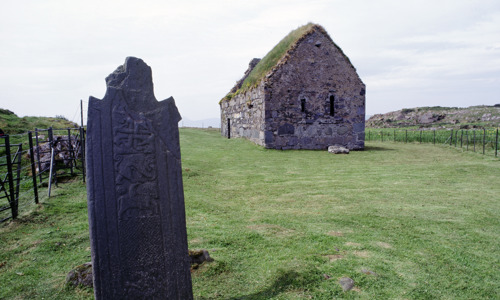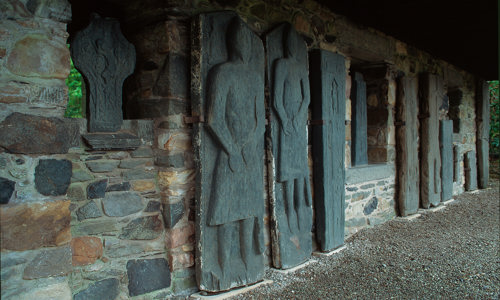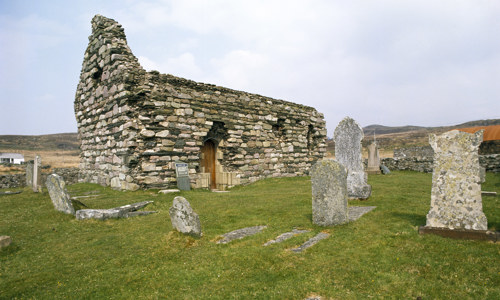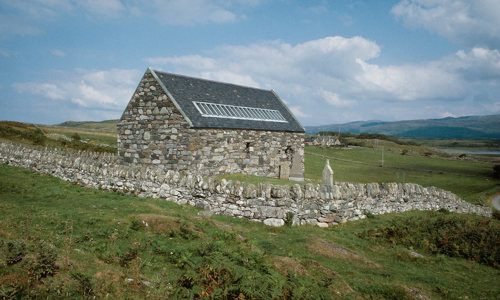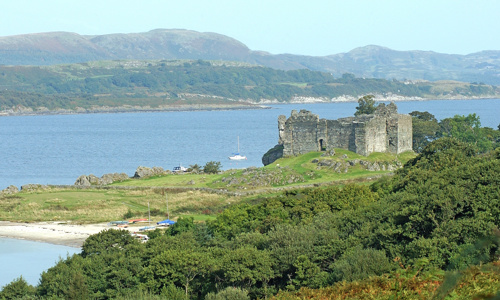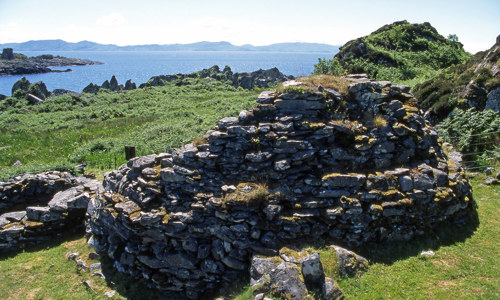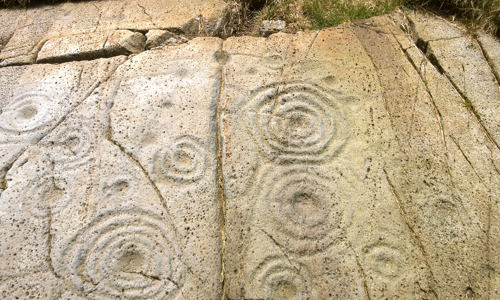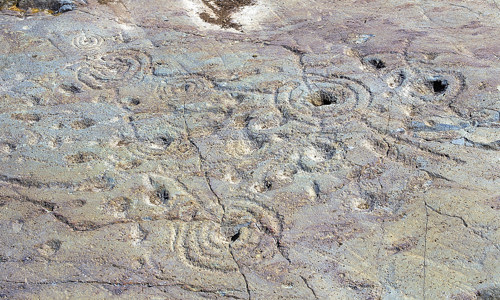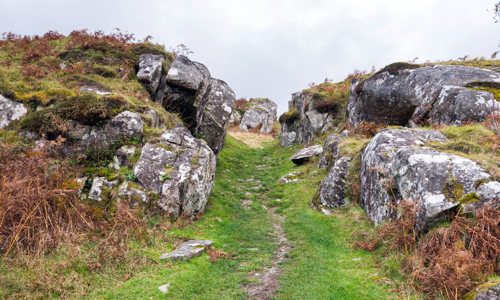History
The Kildalton Cross was erected more than 1,200 years ago, and very unusually still stands in its original location. Excavations show there was an even earlier cross-slab on the site: this was a site with an already established Christian presence.
The cross is carved in grey-green chlorite schist, a particularly hard local stone. It would have been very difficult to work, but we have that same durability to thank for its excellent state of preservation.
A preaching cross
The Kildalton Cross would have been used as a tool to help priests preach the Christian gospel. It’s a ring-headed high cross, standing 2.65m high with a width of 1.32m.
Much of the cross’s surface is covered in fine carvings, all the more impressive given the stone’s hardness. The west face of the shaft depicts:
• geometric designs comprising two roundels of ‘snake-and-boss’ decoration
• a prominent boss set in a ring of smaller bosses and paired snakes in the centre of the west face
• four inward-facing lions, symbolising Christ as the Lion of Judah, a feature shared by a Pictish ‘sarcophagus’ at St Andrews Cathedral
On its east face, we can see:
• rich spiral-work woven around five open roundels
• what appear to be peacocks feasting on grapes, a detail paralleled in the Iona-produced gospel, the Book of Kells
• the Virgin and Child on the cross-head
• an open boss remarkably similar to the boss on the shrine at Steeple Bumpstead in Essex
The left arm, on the east side, shows Cain slaying Abel, and the right shows the sacrifice of Isaac by Abraham. On the top arm, two angels stand above a figure gripping the jaws of a rearing beast – it’s possible this scene depicts David killing the lion. Above is a horned animal, possibly a sheep.
Under and around
During repairs to the cross’s foundations in the 1800s, evidence of another, earlier cross-slab was found here. Human bones were also found beneath the cross.
A fine collection of early Christian carved stones have been found in the graveyard, some of which are now on display at the Museum of Islay Life in Port Charlotte. This all points to Christian activity at the site prior to the erection of the Kildalton Cross.
The adjacent church was built some time after 1200, and was redundant by 1700.


